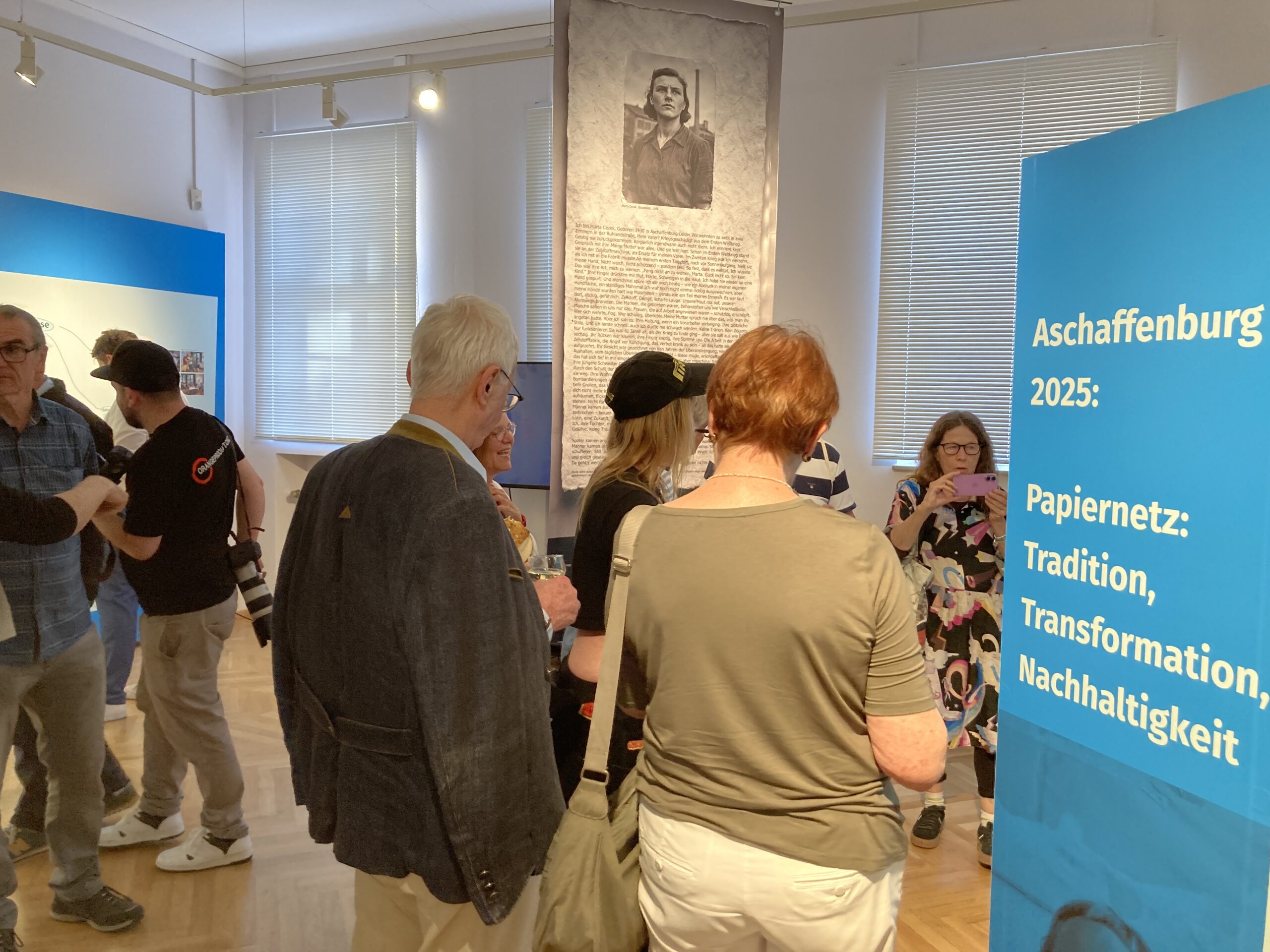Intro
An exhibition on display from June 13 to September 14, 2025 in Aschaffenburg
The Aschaffenburg City and Abbey Archive organized an exhibition about the project DIALOG CITY, which presented the organization, development, and activities of the initiative through images, texts, and films — from the hybrid festivals in Mondovì and Graz to the creation of a digital citizens’ archive and the design of a Future Literacy Methodology.
Officially part of the Aschaffenburg Cultural Days and the DIALOG CITY Future Festival, the exhibition gave more than 1,500 visitors the opportunity to learn about the project and its participants, reflect on the digital transformation of cities, and take away valuable insights.
The exhibition began with the forward-looking guiding question: “How do we want to live in the future?” Its concept was primarily based on providing insights into the project’s work and organization, while also highlighting the challenges of digitization in the cultural sector. The explanatory texts, enriched with visual material, described the partner organizations and the project’s individual components — such as the festivals, the Citizen Archive Platform, and the Futures Literacy Toolkit.
The exhibition also emphasized the local dimension of the project in Aschaffenburg: it presented the city’s digital strategy, the Digitalladen, and digital initiatives such as heimat:hub. A map illustrated the connections between the project’s partner organizations, spanning from Greece to France and from Germany to Austria and Italy.
Another focal point of the exhibition was the four artist residencies in Mondovì, Graz, Aschaffenburg, and Montpellier. The impressive “Wall of Mondovì”, created by Anne Fehres and Luke Conroy, adorned the exhibition space, as did the AI-generated fabric panels by Lisa Maria Baier, which made visible the women workers of Aschaffenburg’s paper industry. The “Salt of Montpellier”, developed by culinary artist Alexandre Benetas-Ottobrini during his residency, was also featured. In addition, videos documented the artists’ working processes.
A prototype developed during the Game Jam at the Future Festival (July 2025) also found its way into the exhibition space, inviting visitors to engage playfully with ideas about the cities of the future. In an interactive corner, guests could reflect on the future roles of archivists.
Overall, the exhibition demonstrated how a culture of dialogue can shape and guide the creative and sustainable development of European cities. In doing so, it helped raise awareness of social and cultural developments — such as the use of artificial intelligence — taking place across Europe.
